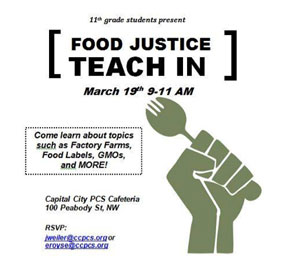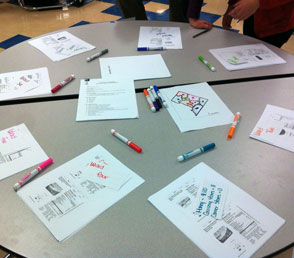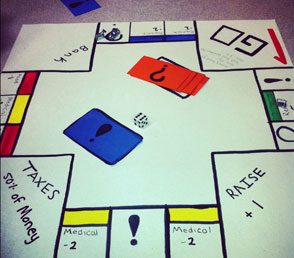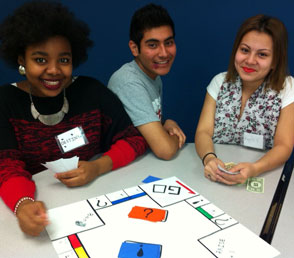2014 Food Justice Teach-In: When the Students Become the Teachers
By Neha Singhal
“If you were at the grocery store and saw an apple with one stem and another apple with two stems, which one would you buy?” As much as I would like to say it doesn’t matter, I would probably end up picking the one with one stem because this superficially normal-looking apple was an option. Marquell and Isaiah, the students who asked me this question, confirmed that most buyers would do the same, thereby reinforcing perceptions about “perfect” fruits and vegetables that led to massive food wastage in the United States.
This exhibit on food waste was just one of more than 30 at the Food Justice Teach-In, an event put on by 11th-grade students at the Capital City Public Charter high school. These students worked for months to research, conduct interviews with experts, and develop presentations to teach about the intersections of food, economics, and environmental justice.
Food Justice Teach-In Flier
Cynthia, Ernesto, Wysdom and Uriel present on food labels.
Exhibits
I visited a number of exhibits that showcased homemade recipes, student made veggie burgers, guides to understanding food labels, and visual displays of high sugar content in soft drinks. On the topic of food deserts, a team of two students, Meredith and Jenny, creatively explained the issue by splitting up the eight wards of D.C. into sections, each with its own list of grocery options, dollar amounts per item, and income to spend. The goal was for participants to see how the vast grocery choices and spending power in higher-income wards sharply contrasted with limited choice and less income in the less affluent wards. For example, they found more accessible grocery stores in Ward 3 than in Ward 8 (which instead had more convenience stores). The options listed for Ward 3 were organic, fresh foods, whereas the options in Ward 8 were processed foods. Participants could also only use $20 on groceries if they were choosing in Ward 8, while those who chose Ward 3 could use $100 to buy food.
The inequity between wards became clear through this activity. One way the students discussed changing the situation involved having healthy groceries at convenience stores to help increase access inwards that do not have many grocery stores.
When I asked them why they chose this topic, Meredith shared her concerns about a grocery store that was converted to a condo building in her community, while Jenny couldn’t believe this injustice was taking place and wanted to investigate it more.
Income inequality and food insecurity in D.C. wards.
Jenny and Meredith present lack of grocery stores in low-income wards.
Board Game
Another team of students, Destiny, Keyla, and Carlos, worked together to create a board game, “Fast Food Monopoly,” to engage participants on the issue of workers’ rights in the restaurant industry. Right from the onset this game exposed systemic income inequity—the players who were workers started off with significantly less money than the players who were bosses. When landing on certain squares, participants became aware about deeper issues workers face such as health insurance, difficulties paying for rent, and general treatment on the job. As their solution, this team strongly favored the recent raise in the minimum wage.
When asked how they personally changed after researching this topic, they all agreed that they should be more patient at McDonald’s and appreciate everything fast food workers go through. It was humbling to hear this kind of learning happening, the kind of social and empathetic learning that could never be gauged on standardized tests.
“Fast Food Monopoly” board game
Destiny, Carlos, and Keyla present fast food worker rights.
Engaged Learning
That’s when it hit me. THIS is what real, engaged learning looks like when the pressures of high-stakes testing are not in the picture. One of the teachers explained that 11th grade does not have to waste class time on DCAS exam prep, freeing them to engage in more project-based assignments that involve critical thinking, in-depth research, and verbal presentation of knowledge. The beautiful part was not only the students who were passionately presenting their topics and trying to change visitors’ eating habits, but also the school-wide support this event received. Students and teachers from other grades (and other schools) were invited to attend, engaging presenters with questions and discussions about the issues.
As a future teacher, I was encouraged by seeing critical pedagogy in action. I am even more convinced of the fact that every student deserves community-based education that values their interests and ideas, and the ways social justice issues affect their lives.






